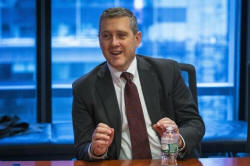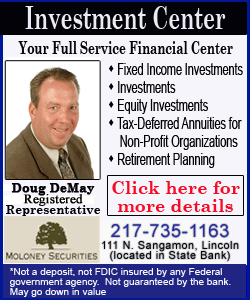|
 Tight
U.S. labor market may put pressure on inflation: Fed's
Bullard Tight
U.S. labor market may put pressure on inflation: Fed's
Bullard
 Send a link to a friend
Send a link to a friend
[May 23, 2016]
BEIJING (Reuters) - A relatively
tight labor market in the United States may put upward pressure on
inflation, raising the case for higher interest rates, St. Louis Federal
Reserve President James Bullard said on Monday.
|
|
 The comments come as financial markets have increased expectations
for a U.S. interest rate hike in June or July and a range of
policymakers are now stating that a rise is firmly on the table for
the next policy meeting in June. The comments come as financial markets have increased expectations
for a U.S. interest rate hike in June or July and a range of
policymakers are now stating that a rise is firmly on the table for
the next policy meeting in June.
"Labor markets are relatively tight. This may put upward pressure on
inflation going forward," Bullard, a voting member of the Fed's
policy-setting committee, said in Beijing.
"This is an important factor supporting the FOMC view on the
expected path of the policy rate," he said.
Bullard said the Federal Open Market Committee has laid out a
data-dependent "slow normalization" of rates, thereby the nominal
policy rate would gradually rise over the next several years
provided the economy evolves as expected.
The remarks were prepared for delivery at a meeting of the Official
Monetary and Financial Institutions Forum, which focuses on monetary
policy and investment.

Expectations for a June rate hike rose last week following minutes
from the central bank's April policy meeting released on May 18 that
showed Fed officials felt the U.S. economy could be ready for
another interest rate increase.
Bullard said the U.S. labor market was performing well and global
headwinds that had partly prevented the Federal Reserve from raising
rates again may have waned.
"U.S. labor market performance has been very good. By nearly any
metric, U.S. labor markets are at or beyond full employment," he
said.
In deciding whether to raise rates, the Fed looks for improvement in
the economy, further strengthening of the jobs market and evidence
that inflation is moving toward its 2 percent target.
U.S. economic growth during the first quarter slowed to an annual
rate of 0.5 percent, a two-year low, but ongoing robust job growth
suggested the economy had not gone off the track.
[to top of second column] |

The jobless rate, now at 5 percent, is near what most economists consider full
employment.
Recent data including retail sales, housing starts and industrial production
painted an upbeat picture at the start of the second quarter.
However, some Fed officials have expressed concern in recent weeks and months
that the economy is stuck in a state where even historically low rates of growth
can fuel inflation.
The Fed last month kept its target overnight interest rate in a range of 0.25
percent to 0.50 percent.
Some policymakers at the April meeting said they were concerned financial
markets could be roiled by a possible British exit from the European Union in a
vote next month or by China's exchange rate policies.
(Reporting by Elias Glenn; Writing by Kevin Yao; Editing by Jacqueline Wong)
[© 2016 Thomson Reuters. All rights
reserved.] Copyright 2016 Reuters. All rights reserved. This material may not be published,
broadcast, rewritten or redistributed.

 |